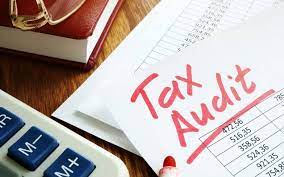With the Fringe Benefit Tax year-end upon us we thought we’d share with you what’s new in FBT.
Employer cars repaired at a workshop.
Does an employer provide a car fringe benefit to an employee on a day which the car is garaged at a mechanic’s workshop for repair?
ATO factsheet, Fringe Benefits Tax QC71121 has confirmed that a car being held at a workshop for “extensive repairs” is not being applied for private use and is not held by the provider during these periods, therefore no fringe benefit will occur in relation to these days.
What does this mean for me?
As employers, the number of days provided can be reduced if using the statutory method or if using the operating cost method, any costs relating to the vehicle during the repair period can be excluded. This includes a proportion of annual expenses such as insurance and registration.
Extensive repairs relate to where the car is being repaired after an accident or where the car is currently unroadworthy and housed at the mechanic. This concession does not extend to minor repairs or routing servicing as the user still has the ability to cancel the repairs and drive the car away.
Logbook requirement
The ATO has confirmed that the operating cost method may still be used where a valid logbook has not been maintained for the car. A private percentage of 100% can be used to compare with the statutory formula and the lower may be used. This may produce a lower FBT liability if the car was purchased a number of years ago or the running costs of the car are low.
FBT Trap – cars with signage
Many businesses now provide cars with custom signage, allowing the business to be advertised when the car is being driven or in a public area. Confusion stems relating to whether this is considered advertising and a business use of 100% can be used in relation to FBT. ATO have updated guidance confirming that private use is “everything else other than the exclusive course of working, running a business or otherwise earning income.” Therefore these cars have a dual purpose and will still be available for private use under the definition in relation to FBT.
Electric Cars & Plug-in Hybrids
Qualifying electric cars are exempt from FBT from 1 July 2022. This is a huge exemption and benefit for employers in terms of FBT, but don’t get too excited too quickly. Whilst this is a great development, the compliance requirements surrounding these vehicles remain. Employers are still required to include the value of an exempt FBT electric car when determining if an employee has a reportable fringe benefits amount to be declared on their payment summary.
The ATO has released PCG 2024/2 to provide a short cut method in determining the cost of charging an electric car at home, being:
Electric vehicle home charging rate x total number of kilometres travelled by the car in the FBT year.
Note that:
- The rate for 2023 and later years is 4.20 cents per kilometre
- Employers must disregard any costs at a commercial charging station
- Plug in hybrids cannot use this method
- This method is not compulsory
Whilst electricity costs are a car expenses the provision of the electric vehicle charging station itself will be regarded as an expense payment benefit and is subject to FBT.
Crackdown on utes and other work-horse vehicles
Eligible vehicles are exempt from FBT if regarded as a work-horse vehicles and any private use is limited to ‘work-related travel or is ‘minor, irregular and infrequent’.
But what is limited private use?
- Travel to and from home
- Travel incidental to employment related duties (eg. Stopping for coffee for a business meeting)
- Minor, irregular and infrequent.
ATO’s PCG 2018/3 guides that total private use of the vehicle (other than home to work) in the FBT year should be no more than 1,000kms with no single private journey exceeding 200kms.
The ATO data matching program has been extended to monitor registration records until the end of 2025 regarding makes, models, engine size and carrying capacity of vehicles.
Whilst special records are not required to ensure eligibility of the above. It is advised that odometer records are kept to ensure that usage is within the expected private use between home and work travel during the period.
Any vehicles not meeting this criteria will have a residual fringe benefit.
Other related blogs:
Tax consequences of buying a work vehicle
Deductibility of electric vehicle used for work
Claiming vehicle expenses using a log book method
Author: Stacey Walker
Email: [email protected]











